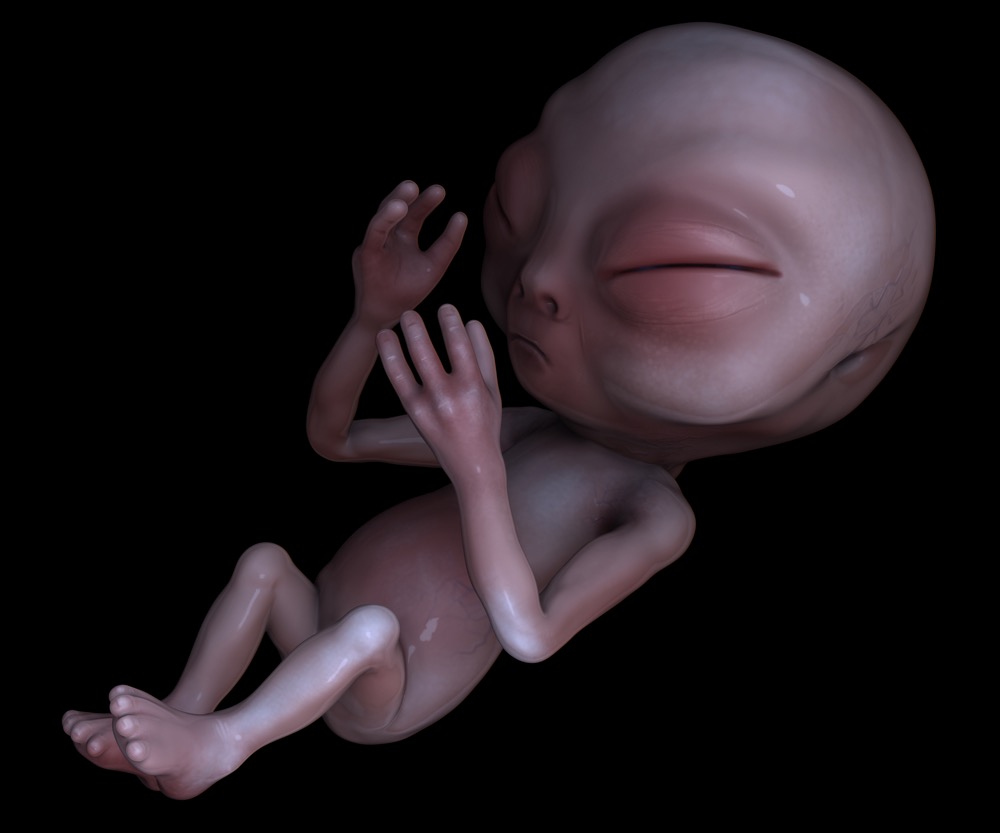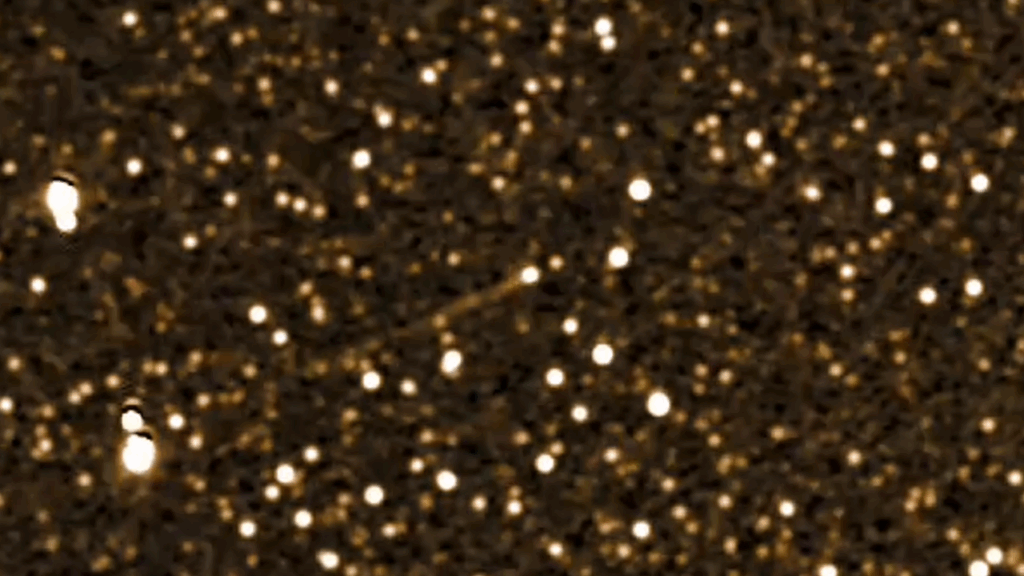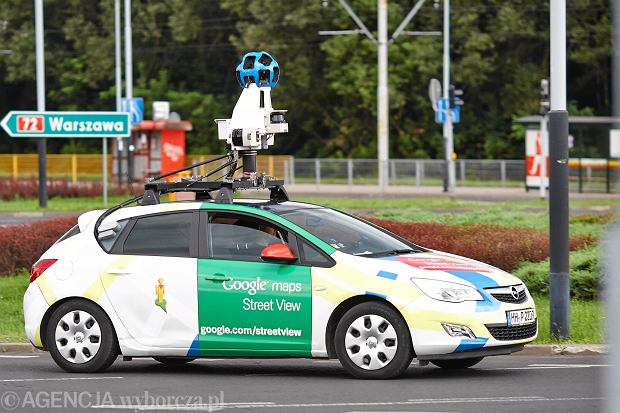Blog
Sensors and Transducers
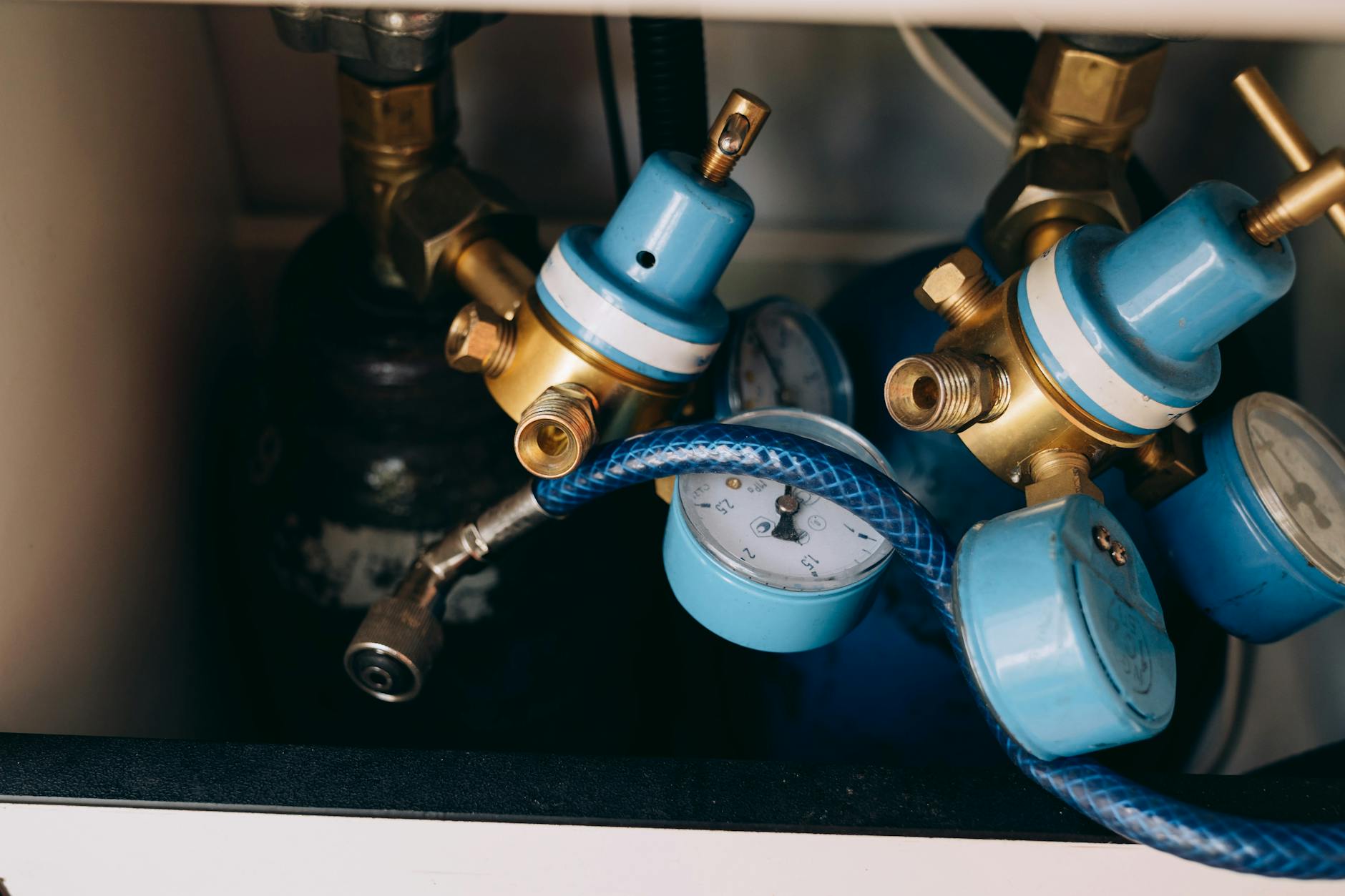
Sensors and Transducers
Sensors and transducers are critical components in modern measurement and control systems, converting physical phenomena into readable signals or vice versa. Understanding the types, working principles, and signal processing involved is essential for engineers and professionals handling measurement and automation technologies. This article provides a comprehensive overview of various sensors and transducers, their operating mechanisms, and signal conditioning techniques.
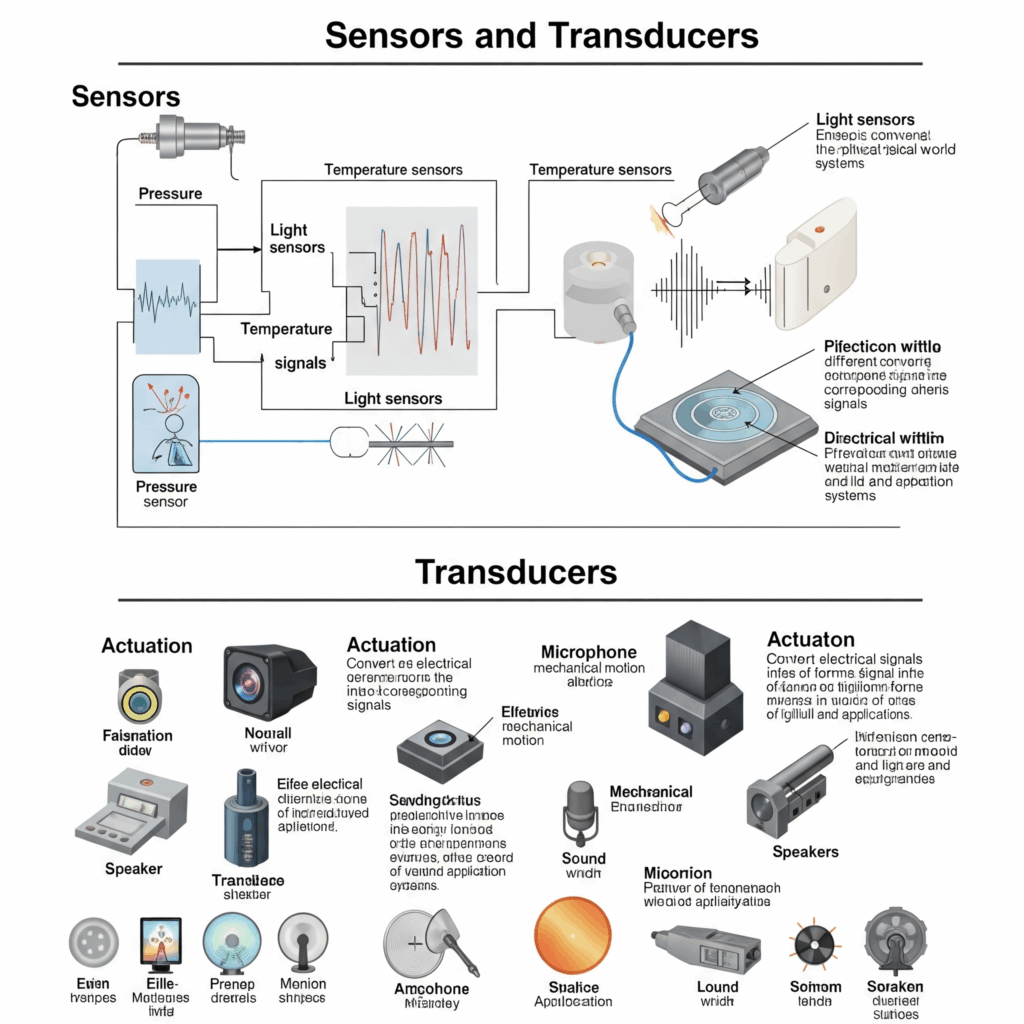
Types of Sensors
Sensors are devices that detect changes in the environment or within systems and respond by generating signals that can be interpreted by observers or instruments. Sensors are usually categorised based on the physical property they measure. Common categories include temperature, pressure, flow, and level sensors.
Types of Sensors
Sensors are devices that detect changes in the environment or within systems and respond by generating signals that can be interpreted by observers or instruments. Sensors are usually categorised based on the physical property they measure. Common categories include temperature, pressure, flow, and level sensors.
1. Temperature Sensors

Temperature sensors detect changes in temperature and are widely used in many industries for process monitoring, climate control, and safety systems.
- Thermocouples: These sensors consist of two dissimilar metals joined at one end. When subjected to heat, a voltage is generated due to the Seebeck effect, which is measured to determine temperature.
- Resistance Temperature Detectors (RTDs): RTDs utilise a metal element (often platinum) whose resistance varies linearly with temperature. They offer exceptional accuracy and stability.
- Thermistors: Composed typically of ceramic materials, thermistors change electrical resistance significantly with small changes in temperature. These can exhibit a negative (NTC) or positive (PTC) temperature coefficient.
- Infrared (IR) Sensors: These sensors measure temperature by detecting the infrared radiation emitted by an object, enabling non-contact temperature monitoring.
2. Pressure Sensors

Pressure sensors measure fluid or gas pressure and are essential in numerous industrial applications, from automotive systems to medical devices.
- Piezoelectric Pressure Sensors: These utilise the piezoelectric effect, generating a voltage proportional to mechanical stress exerted by pressure.
- Strain Gauge Pressure Sensors: Employing metallic strain gauges bonded to a diaphragm surface, these sensors detect pressure-induced deformation to measure changes accurately.
- Capacitive Pressure Sensors: Pressure variations cause changes in capacitance formed between two plates, facilitating precise measurement even at low pressures.
- Piezoresistive Pressure Sensors: These sensors detect pressure through the piezoresistive effect, changing electrical resistance proportionally with mechanical stress.
3. Flow Sensors

Flow sensors monitor fluid or gas flow rates in pipelines or open systems. They are extensively used in water management, HVAC systems, fuel management, and industrial processes.
- Differential Pressure Sensors: They measure flow by detecting differential pressure across a restriction, employing Bernoulli’s principle.
- Electromagnetic Flowmeters: As per Faraday’s law, these sensors measure fluid flow by detecting the voltage generated when a conductive fluid passes through a magnetic field.
- Turbine Flowmeters: These use a turbine rotor within a pipe; fluid passing through rotates the turbine proportional to flow velocity, with rotational speed measured by sensors.
- Ultrasonic Flowmeters: Measure flow rates via ultrasonic sound waves, calculating flow velocity by detecting time-of-flight or Doppler shift changes.
4. Level Sensors

Level sensors determine the level of liquids or solids in a container or vessel, providing essential data for inventory, storage, and operational safety.
- Capacitive Level Sensors: They measure level by detecting variations in capacitance caused by different dielectric constants when the level fluctuates.
- Ultrasonic Level Sensors: Emit high-frequency sound waves from the sensor, calculating fluid or solid levels by measuring echo response times from the surface.
- Float Level Sensors: Use a floating device positioned on the fluid surface; movement activates switches or changes electrical signals as levels shift.
- Radar Level Sensors: Similar to ultrasonic sensors, radar sensors measure liquid or solid levels using microwaves, providing accuracy even in harsh conditions and vapour-filled environments.
Working Principles of Common Sensors
Understanding sensor operation requires knowledge of fundamental physical effects and principles:
- Seebeck Effect (Thermocouples): Generates voltage across junctions of two dissimilar metals when exposed to varying temperatures.
- Piezoelectric Effect: Mechanical pressure applied to certain crystalline structures generates a voltage proportional to the applied force.
- Resistive Principle: Materials (such as metals and ceramics) vary electrical resistance with environmental stimuli such as temperature, strain, or humidity.
- Capacitive Principle: Changes in dielectric constants, electrode distances, or surface area alter capacitance values measurable as signals indicating pressure or levels.
- Electromagnetic Induction (Faraday’s principle): A conductor in motion through a magnetic field induces an electromotive force proportional to its velocity or flow rate.
Types of Transducers
A transducer transforms one form of energy into another, typically converting physical quantities into electrical signals or vice versa. Transducers are generally classified as:
- Input Transducers (Sensors): Receive energy from the environment (mechanical, thermal, chemical) and convert it into electrical signals. Examples include thermocouples, strain gauges, and photodiodes.
- Output Transducers (Actuators): Receive electrical signals and convert them into physical actions or energies such as mechanical motion, heat, or light. Examples include motors, heaters, relays, piezoelectric buzzers, and LEDs.
Signal Conditioning
Signal conditioning involves preparing the sensor or transducer signal to ensure compatibility with data acquisition systems, control devices, or display instruments. It typically performs one or more of the following functions:
- Amplification: Increasing signal magnitude to match input requirements of measurement systems.
- Filtering: Removing unwanted noise or interference using low-pass, high-pass, band-pass, or band-stop filters.
- Linearisation: Correcting nonlinear sensor signals for accurate measurement using mathematical techniques or lookup tables.
- Isolation: Electrically separating sensor circuits from monitoring and control systems to protect against interference and potential voltage surges.
- Excitation: Providing external power supplies necessary for certain sensors (e.g., RTDs, strain gauges).
- Conversion: Transforming analogue signals into digital form using analogue-to-digital converters (ADCs), facilitating further processing and analysis.
Conclusion
Sensors and transducers have become indispensable in technology, engineering, environment monitoring, industrial automation, and various daily-life applications. Comprehensive knowledge of their types, working principles, associated electronics, and proper signal conditioning strategies ensures optimal sensor performance, reliability, and precision in diverse monitoring and control systems. As technology continues its rapid evolution, advancements in sensor materials, wireless technologies, and embedded systems will further drive innovation, accuracy, and efficiency in measurement systems.








